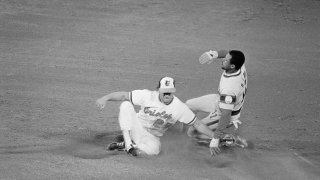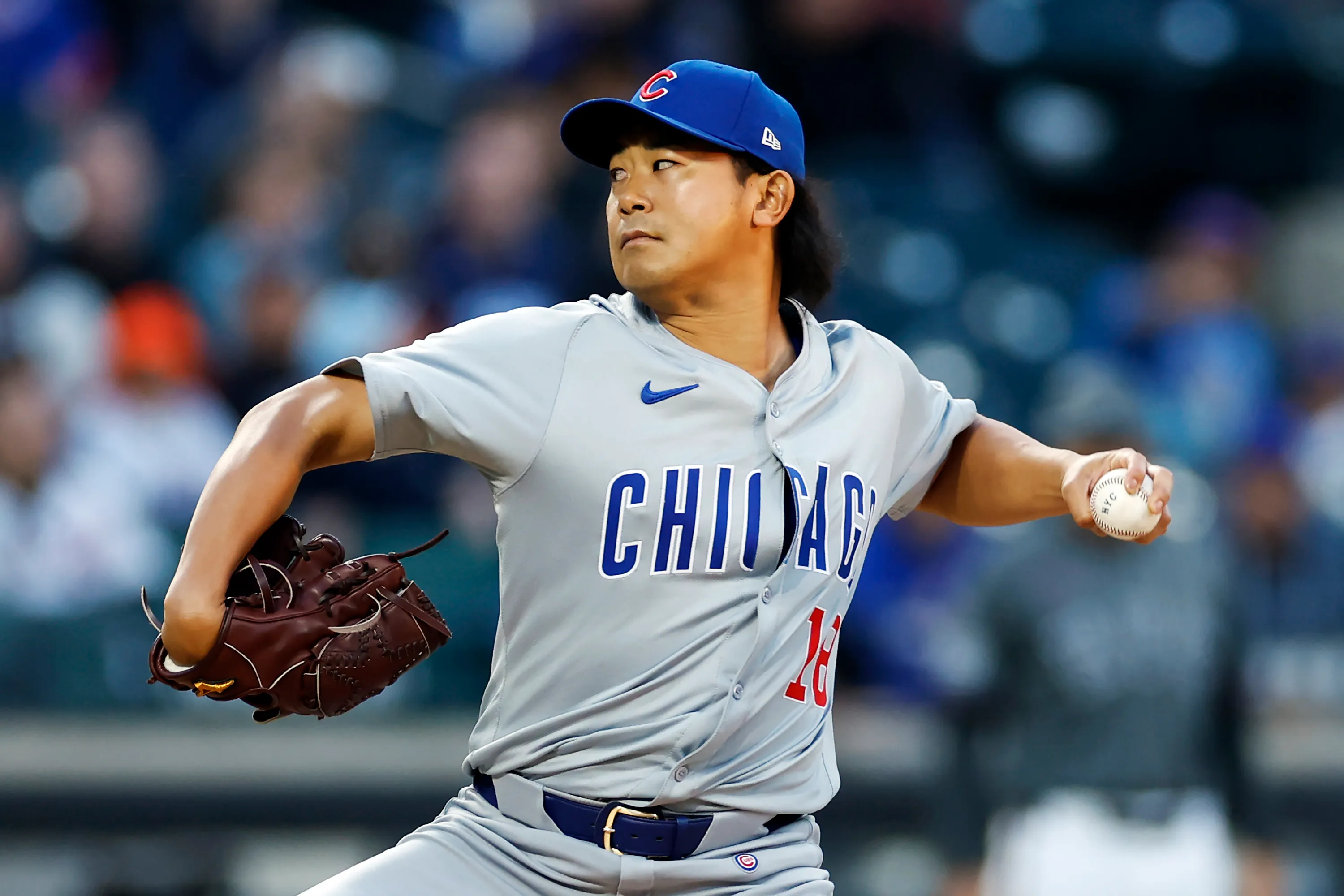
He may have played his final MLB game three days before his 30th birthday, but still was able to make a mark in White Sox history. He was the leadoff man and primary center fielder for the 1983 “Winning Ugly” White Sox, and along the way ran his way into the record book.
Rudy Law: remember that guy?
Law was born October 7, 1956 in Waco, Texas and attended Ravenswood High School in East Palo Alto, Calif. The Dodgers signed him in 1975 after he went undrafted, and Law worked his way through the minors. He hit .335 with 19 steals in 54 games with low-A Bellingham in 1976; .386 with 37 steals in 122 games in 1977 at Single-A Lodi, and .312 with 79 steals at Triple-A Albuquerque in 1978.
Law had also showed a sharp eye at the plate, posting a .381 OBP with 66 walks in Albuquerque. He finally got the call to the majors, debuting on Sept. 12, 1978 as a pinch runner for catcher Joe Ferguson. He scored a run on a Davey Lopes double as Burt Hooton tossed an 8-0 shutout. Law’s first three MLB hits came Sept. 28 in Cincinnati: three singles – two off Mike LaCoss and one off Dan Dumoulin.
The problem was the Dodgers had a stacked outfield with Reggie Smith, Dusty Baker, Bill North and Rick Monday. Derrel Thomas came in to replace North in 1979 and by then Mickey Hatcher and Pedro Guerrero were waiting in the wings, so Law spent all of that season in Albuquerque. There he hit .296/.396/.326 with 33 stolen bases.
Law got his chance in 1980, hitting .260 while setting a Dodgers rookie record with 40 stolen bases (broken by Steve Sax in 1982). He hit his first big league home run on July 4, off the Giants’ Allen Ripley. Unfortunately he hit only .213 after the All-Star break and he was back in Albuquerque for all of 1981.
Law was brilliant again back in the minors, hitting .335/.404/.421 with 56 stolen bases at Albuquerque in 1981. (The 1981 Albuquerque Dukes were ranked the 11th greatest minor league team of all time by MiLB.com.) He just wasn’t able to get his talent to translate to the majors. Perhaps he needed a change of scenery, and that’s what he ended up getting. On March 30, 1982 the Dodgers sent Law to the White Sox for outfielder Cecil Espy and pitcher Bert Geiger.
MLB
Initially, Law was a fourth outfielder, getting into games mostly as a pinch hitter and pinch runner. By July 1, he was the starting center fielder, hitting leadoff. He hit a cool .324 with 25 steals after taking over as a starter. Law hit his first American League homer on May 8, and his first career leadoff homer on July 15. The White Sox went from 70-90 in 1980 to 54-52 in 1981 to 87-75 in 1982. They were a team on the rise.
Even though they didn't win a World Series, the 1983 White Sox remain an iconic team in franchise history. Law, a key cog, hit .283/.340/.369 with 77 stolen bases — the latter smashing the White Sox single season record of 56, set by Luis Aparicio in 1959 and Wally Moses in 1943. The record breaker came on Aug.19 in Texas — the day Rangers manager Doug Rader remarked the White Sox were “Winning Ugly” and that they’d soon come back down to earth.
Of course, “Winning Ugly” became a rallying cry and the Sox went on to win 99 games.
Of Law’s 77 stolen bases, 28 came in the first inning, and 76 of the 77 (including the first 75) were of second base; he stole third only once. Compare that to Rickey Henderson, who was the only American Leaguer with more steals than Law in 1983. Rickey had 108 steals, but stole third 29 times. However Law stole them, the White Sox were headed to the playoffs for the first time since Aparicio stole his 56 bases in 1959.
The White Sox fell in the ALCS to the Orioles, three games to one, but Rudy Law did his part. He led all players with seven hits, hitting .389 in 18 at-bats while adding two steals. Cal Ripken was next with six hits.
Law never duplicated his 1983 success, hitting .251/.309/.345 with 29 steals in 1984, and .259/.311/.374 with 29 steals in 1985 — missing time with hamstring injuries both seasons. There were a few highlights, however.
On July 8, both Rudy Law & Vance Law both homered — the only time multiple White Sox players with the same last name homered in the same game until the “summer of Garcías” in 2017. Rudy Law had to give up his No. 11 on Aug. 14, 1984, the day it was retired in honor of Aparicio (though it come out of retirement for Omar Vizquel in 2010-11). Rudy switched over to No. 23.
On Aug. 24, 1985, the Blue Jays' Dave Stieb took a no-hitter into the ninth inning but Law led off the frame with a home run. Homers by Bryan Little and Harold Baines (off reliever Gary Lavelle) followed. It was only the second instance of back-to-back-to-back home runs in franchise history. On Sept. 21, Law hit his second inside-the-park home run with the White Sox (also on Aug. 17, 1983). Since Dick Allen hit two in a game on July 31, 1972, Law is the only White Sox player with multiple inside-the-parkers.
The White Sox released Law in early April 1986 and he caught on with the Royals days later. He hit .261/.327/.388 with 14 steals for Kansas City, and on his final game of the season, Oct. 4, he was in a starting outfield with Bo Jackson — going 2-for-5 with a triple off Dave Stewart. He turned 30 three days later and never played another MLB game, as the Royals released him the following March.
Law’s big league career spanned 749 games and he hit .271 with 656 hits, 18 home runs, 199 RBI and 228 stolen bases. In 1990, he played in the Senior Professional Baseball League for the San Bernardino Pride, where he was teammates with Vida Blue — among other former major leaguers.
Law didn’t have the longest MLB career, and he had his flaws. Bill James in his New Historical Baseball Abstract rated him as having the worst outfield arm of the 1980s, but he was a memorable player (I still have a Rudy Law autographed hat!), who set a White Sox franchise record that still stands.
My favorite Rudy Law nugget from the 1986 White Sox media guide:
“A loyal Los Angeles Lakers basketball fan, Law’s hottest offensive streak of the ’85 season coincidentally occurred when the Lakers defeated Boston for the National Basketball Association title in mid-June”
Well not exactly. From May 27-June 9, (the dates of the 1985 NBA Finals) he hit .214 with one stolen base. But the day the Lakers clinched (June 9), Law started a 17-game stretch where he hit .373 with 9 RBIs and 5 steals. So, there’s something there.
Rudy Law. You remember that guy!


